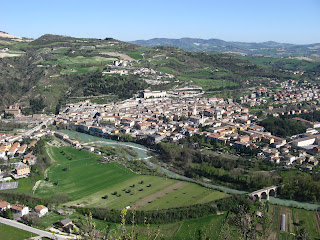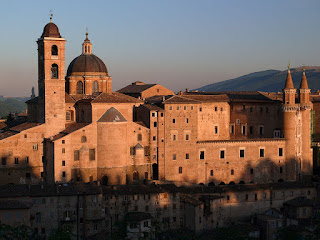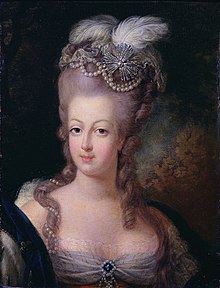Pioneer in printing who worked for a Doge and a Pope
 |
| The first page of Petrucci's volume Harmonice Musices Odhecaton |
It is thought that Petrucci was educated at Urbino, possibly at the humanist court of Guidobaldo da Montefeltro, who was Duke of Urbino apart from a brief period from 1482 until his death in 1508.
To learn the art of printing, in 1490 Petrucci went to Venice, then the most advanced centre for printing in Italy.
In 1498, Petrucci petitioned the Doge, Agostino Barbarigo, for the exclusive right to print music for the next 20 years, which was granted. There are no examples of printed music produced by other Venetian printers until 1520.
Over the years, he continued to refine his technique and he held music printing monopolies in Venice until 1511. He produced books of printed music at the rate of a new book every few months.
Petrucci's collection of 96 chansons, secular songs under the title of Harmonice Musices Odhecaton - One Hundred Songs of Harmonic Music - published in Venice in 1501, was the first book of polyphonic music to be printed from movable type.
His books were crafted with painstaking care and are among the most beautiful examples of printed music from the entire 16th century.
 |
| An example of the music that Petrucci was able to produce using printing presses of his time |
Petrucci’s activities were interrupted by the War of the League of Cambrai against Venice in 1509, and so he returned to Fossombrone where he continued printing.
He applied for a patent with Pope Leo X for the exclusive right to print music, which was granted for several years. The Pope then rescinded the patent when Petrucci failed to produce printed keyboard music.
Papal troops ransacked Fossombrone in 1516 and Petrucci printed nothing for the next three years, possibly because his equipment had been destroyed.
The Venetian Senate asked Petrucci to return to the city in 1536, where he assisted them in printing Greek and Latin texts.
Among his total of 61 music publications are masses, motets, chansons and frottole by the foremost composers of the 15th and early 16th centuries, such as Josquin des Pres, Jean d’Okeghem, Antoine Brumet and Loyset Compere.
Petrucci also published the first book of printed lute music, Francesco Spinaccino’s Intabolatura de Lauto, in 1507.
His later work was considered extraordinary because of the complexity of the notation and the small font that he used.
Petrucci died in Venice in 1539 at the age of 73.
 |
| The town of Fossombrone in Marche occupies a position on the banks of the Metauro river |
Fossombrone, a town of just under 10,000 inhabitants in the province of Pesaro e Urbino in Marche, about 25km (16 miles) east of Urbino, takes its name from the ancient Roman colony of Forum Sempronii. After changing hands several times during the Middle Ages it flourished under the control of Federico III da Montefeltro, the Duke of Urbino, in the 15th century. The town’s Roman heritage is visible in the remains of a statue of the god Vertumnus, the Furlo Pass, constructed by the Emperor Vespasian to shorten the passage of that mountain, the bridge of Trajannear Calmazzo, and the bridge now called Ponte della Concordia, originally built in 292 by Diocletian, which both cross the Metauro river. There is an 18th century cathedral, dedicated to Saint Aldebrandus and Saint Augustine, built in neoclassical style.
 |
| The beautiful Renaissance Ducal Palace in Urbino is one of the most important munuments in Italy |
Urbino, which is inland from the Adriatic resort of Pesaro, in the Marche region, is a majestic city on a steep hill. It was once a famous centre of learning and culture, known not just in Italy but also in its glory days throughout Europe, attracting outstanding artists and scholars to enjoy the patronage of the noble rulers. The Ducal Palace, a Renaissance building made famous by Baldassare Castiglione’s The Book of the Courtier, is now one of the most important monuments in Italy and is listed as a Unesco World Heritage site. It is a city that is home to a number of gastronomic delights, including crescia sfogliata, a flatbread often served stuffed with melted caciotta cheese, and prosciutto di Carpegna, a local cured ham.
Also on this day:
1511: The birth of sculptor and architect Bartolomeo Ammannati
1943: The birth of entertainer and TV presenter Raffaella Carrà
1946: The birth of football coach Fabio Capello
1952: The birth of actress Isabella Rossellini
.jpg)

.jpg)

.jpg)
.jpg)
.jpg)


.jpg)

.jpg)
.jpg)

_-_ritr._A_Ferrazzi,_Recanati,_casa_Leopardi.jpg)






.jpg)


